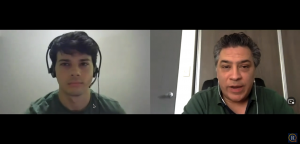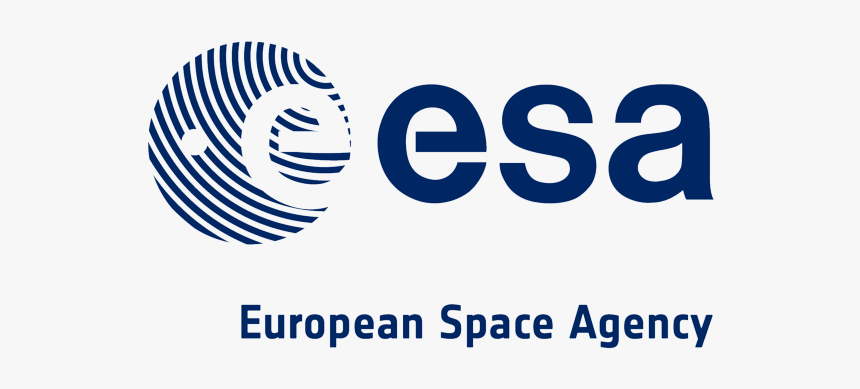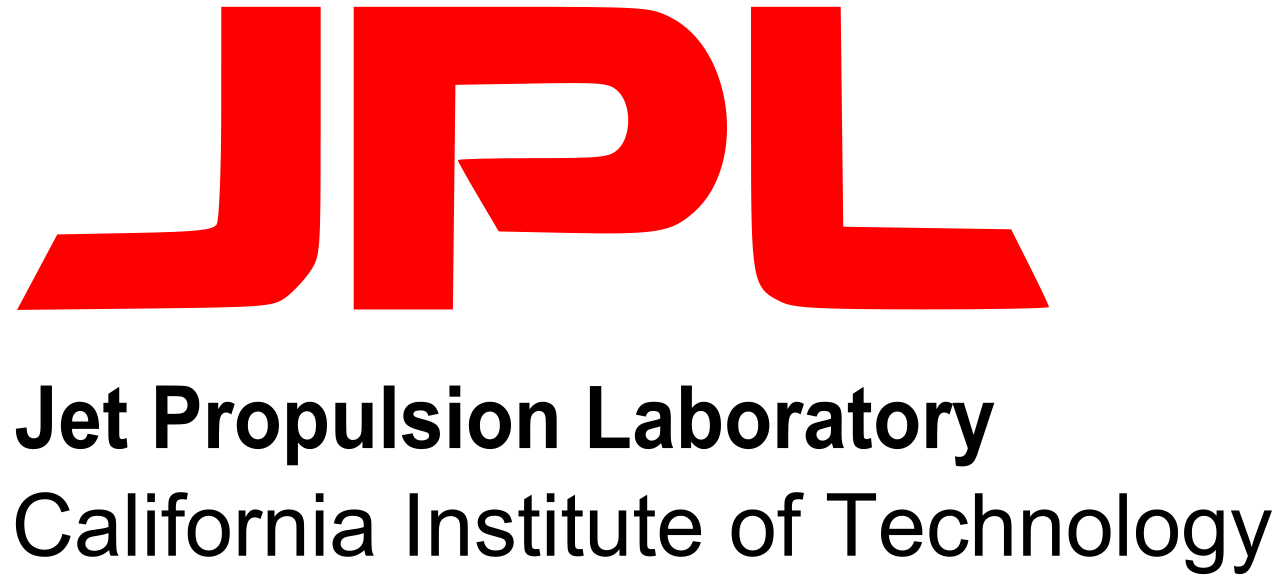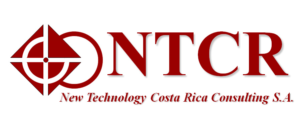hello!  Hola!
Hola!  OLÁ!
OLÁ! 
I'm Moacir Fonseca Becker, a passionate advocate for progress through space-driven innovation and education.
I hold an MS in Aeronautics and Astronautics from Purdue University and am currently in my third year of PhD studies in the same field. With a dual background in mechanical and electrical engineering, I have a deep enthusiasm for space exploration and have pioneered significant space projects in Central America.
My mission is to make a meaningful impact on our world by contributing to the advancement of space exploration.
I am also dedicated to inspiring the next generation. I offer free talks about aerospace engineering and my career path to students aged 15-18 in their last or second-to-last years of high school. If you're interested, please contact me.
I'm Moacir Fonseca Becker, a passionate advocate for progress through space-driven innovation and education.
I hold an MS in Aeronautics and Astronautics from Purdue University and am currently in my third year of PhD studies in the same field. With a dual background in mechanical and electrical engineering, I have a deep enthusiasm for space exploration and have pioneered significant space projects in Central America.
My mission is to make a meaningful impact on our world by contributing to the advancement of space exploration.
I am also dedicated to inspiring the next generation. I offer free talks about aerospace engineering and my career path to students aged 15-18 in their last or second-to-last years of high school. If you're interested, please contact me.
Thank you for coming!
curriculum vitae
Please feel free to click the link below to access my CV
projects portfolio
2023
Orbital pursuer evasion game with incomplete information – class project
Click each tab for more information
This project tackles the challenge of orbital pursuit-evasion, a scenario where a spacecraft must quickly capture a moving target in orbit. It’s viewed as a competitive game where pursuer and evader have conflicting goals. We use the Unscented Kalman Filter for target position estimation and develop a control system to optimize capture time.
The project’s significance is underscored in space scenarios, like tracking stochastically moving space debris. We model these dynamics via Euler-Hill equations, derived from the circular restricted 3-body problem.
We propose and compare three control strategies:
Complete Information Pursuit-Evasion: The control logic is solved using the Riccati equation, assuming both pursuer and evader have complete knowledge of each other’s weight matrices.
Zero-Sum Strategy: The evader’s weight matrices are unknown, and the pursuer assumes them to be similar to its own.
Unscented Kalman Filter: The pursuer uses the Unscented Kalman Filter to estimate the evader’s weight matrices and plans control accordingly.
The assumptions are that the two-body problem is applicable, orbits are nearly circular, and spacecraft mass is constant.
The project wraps up by comparing control strategies for capturing targets, highlighting the practical interest of pursuit-evasion with incomplete information as it reflects real-world scenarios.
Note:
This project was accomplished as part of the Optimal Control and Estimation course (AAE5980) at Purdue University.
PDF report and presentation available upon request.
2023
USING CYCLE-CONSISTENT ADVERSARIAL NETWORKS TRANSLATION TO COLOR SURFACE IMAGES OF MARS
Click each tab for more information
GitHub Repository
https://github.com/MoacirMFB/Mars_CycleGAN
Note:
This project was accomplished as part of the Machine Learning course (STAT598 / ECE595) at Purdue University.
PDF report available upon request.
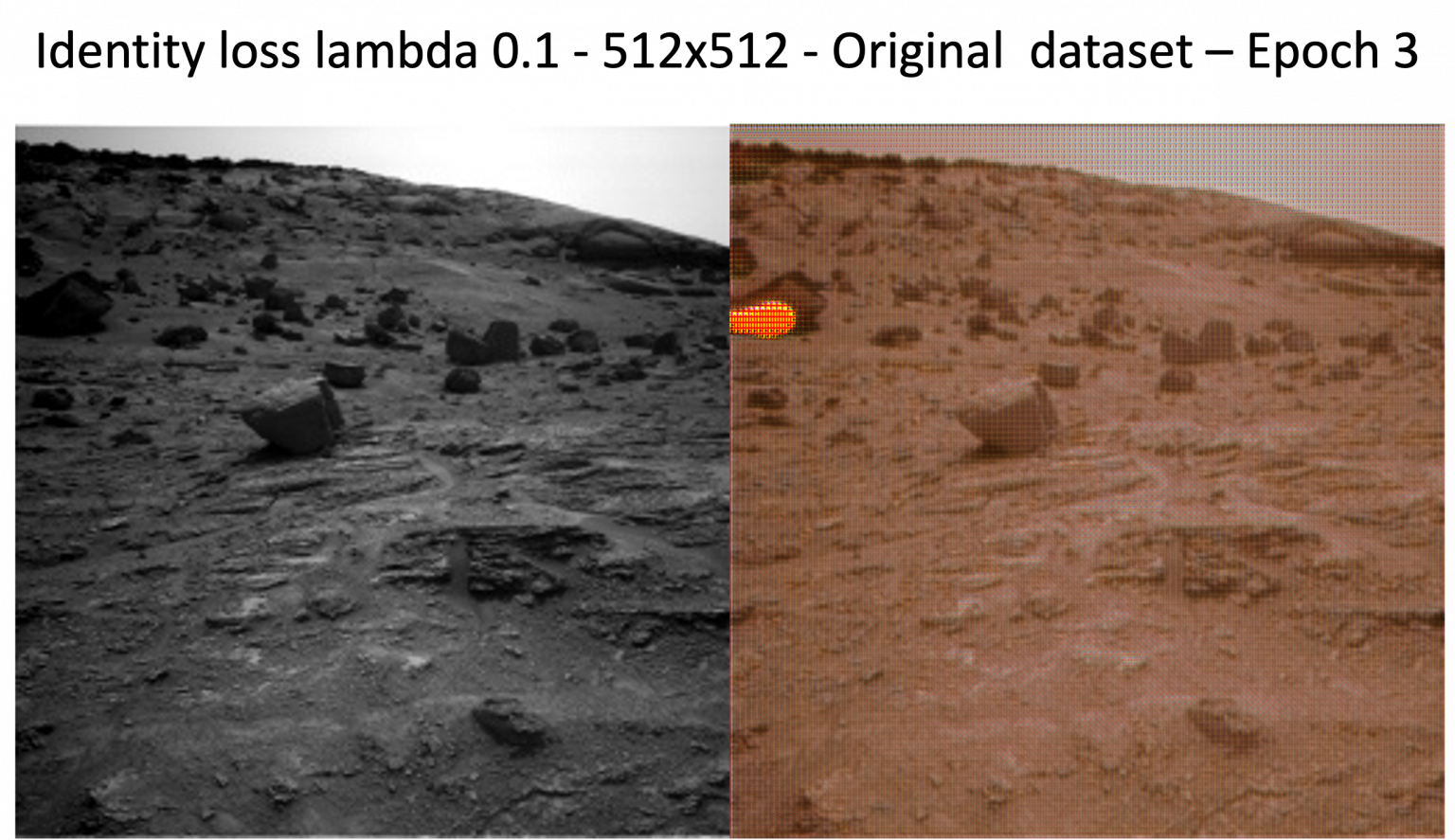
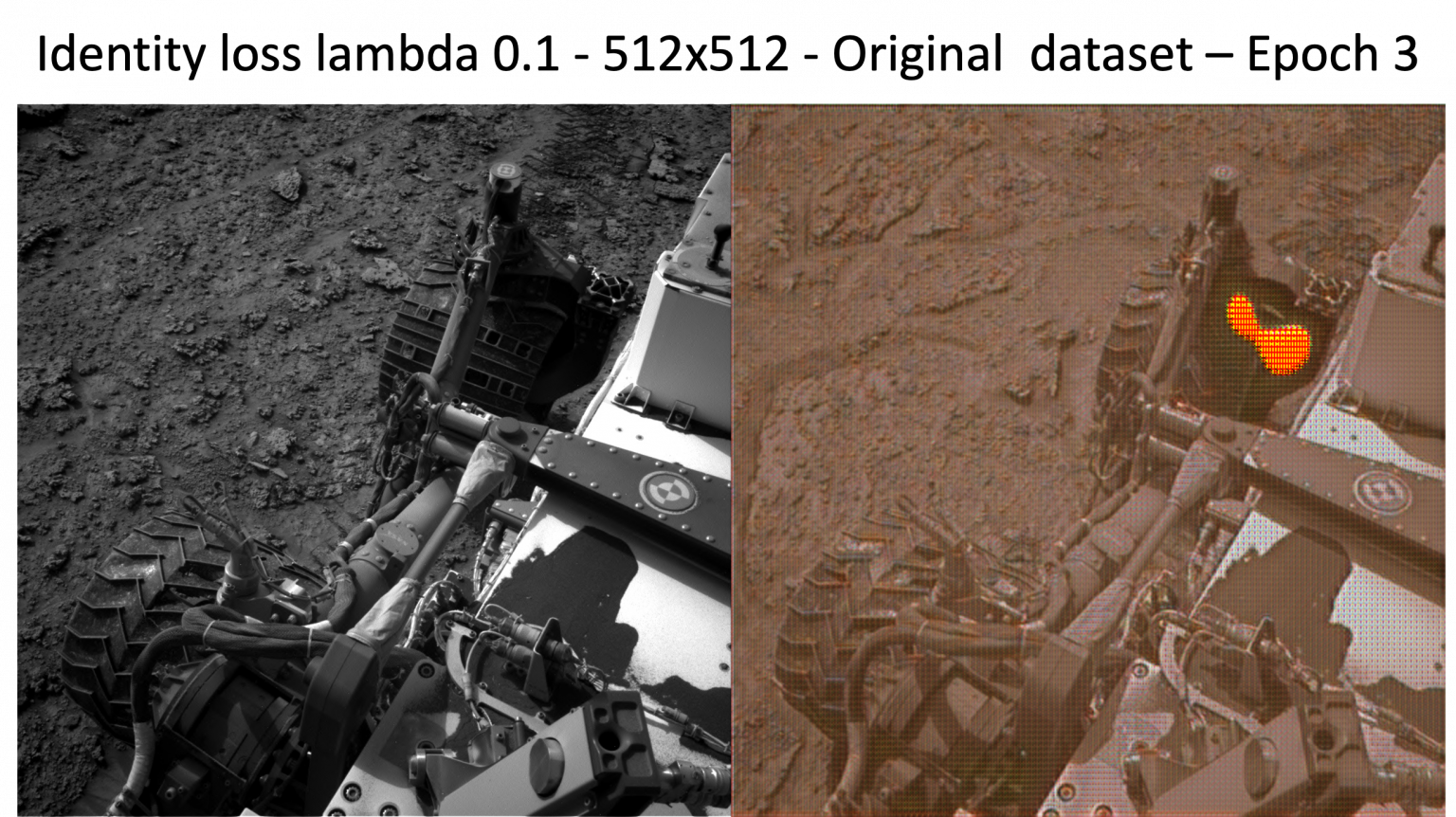
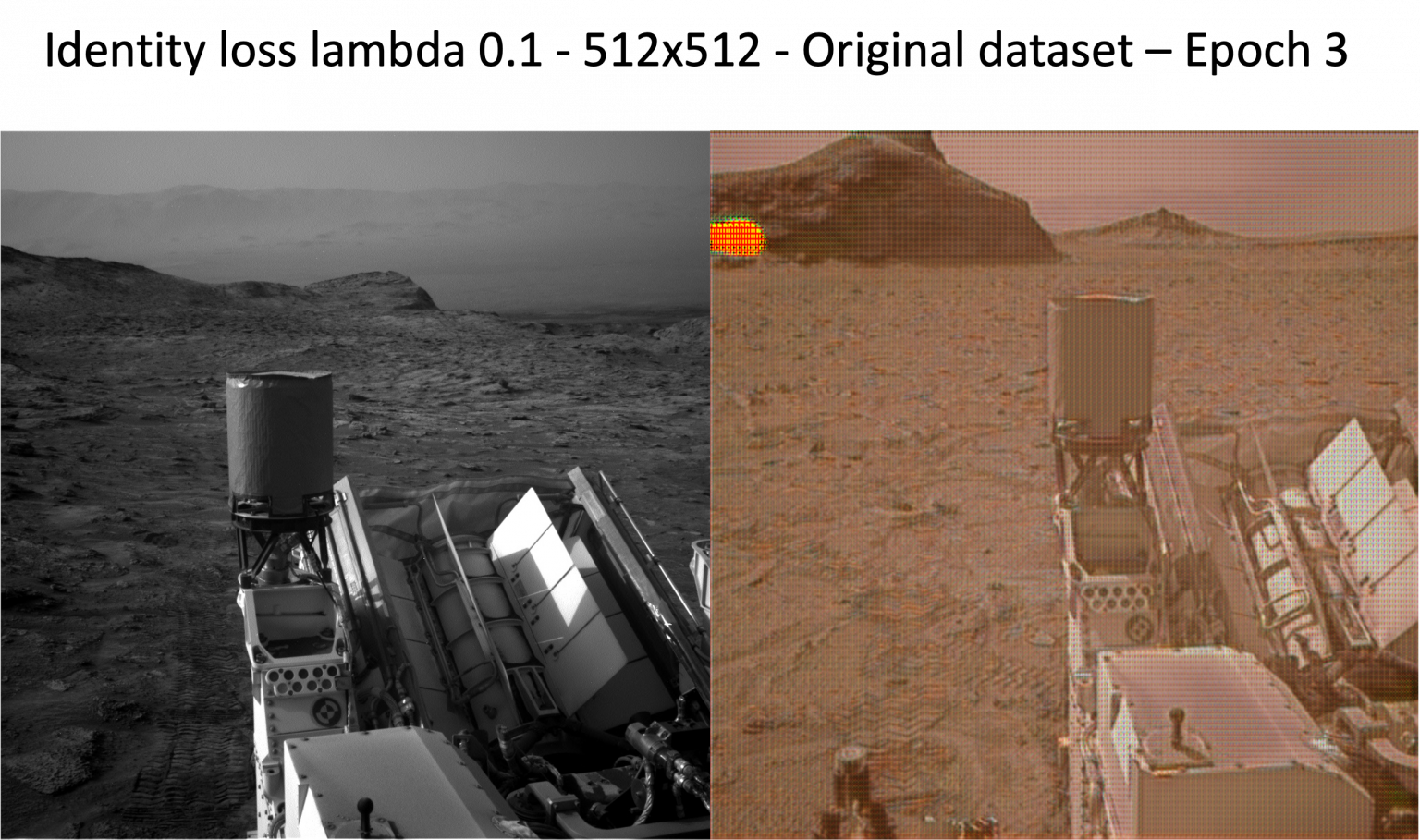
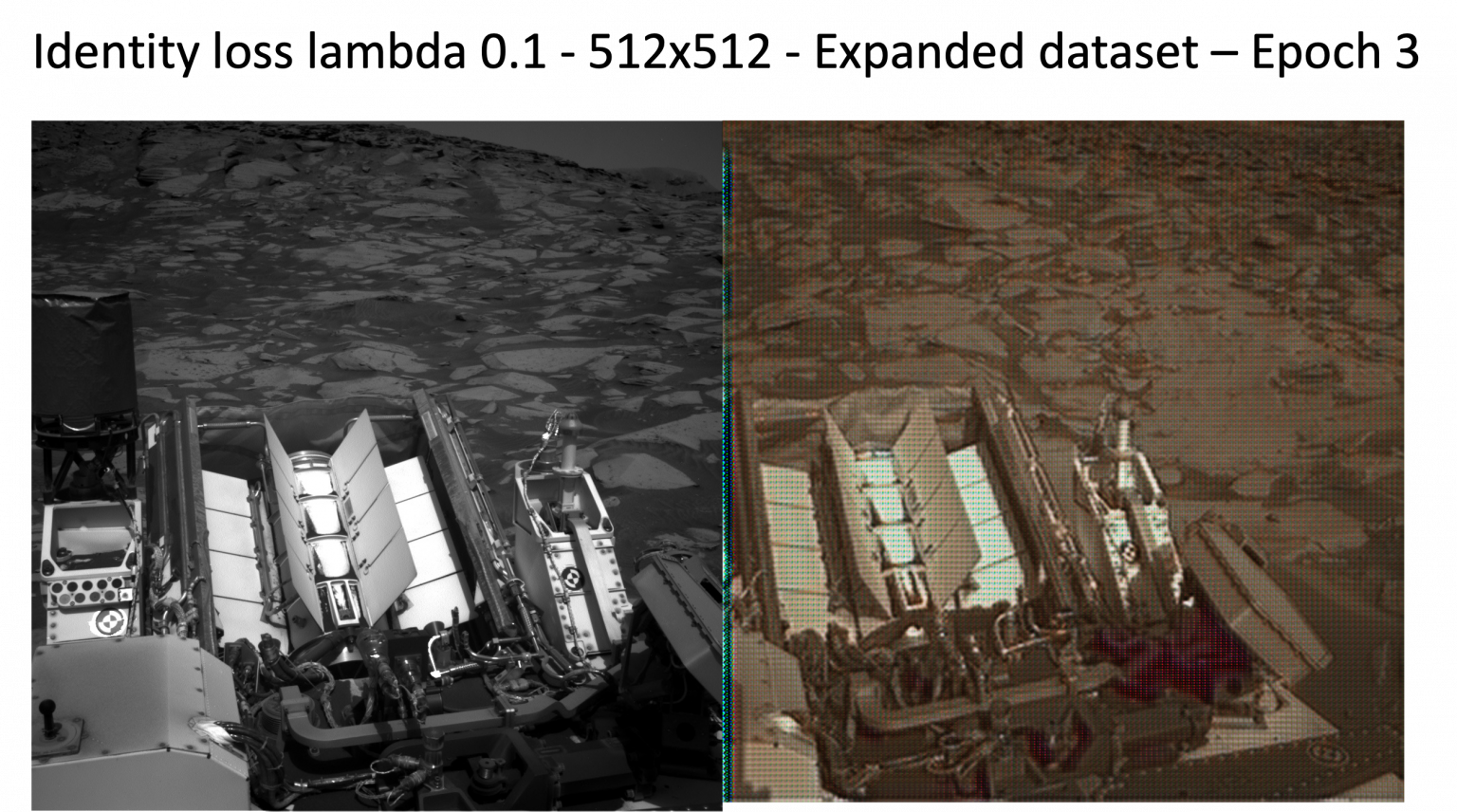
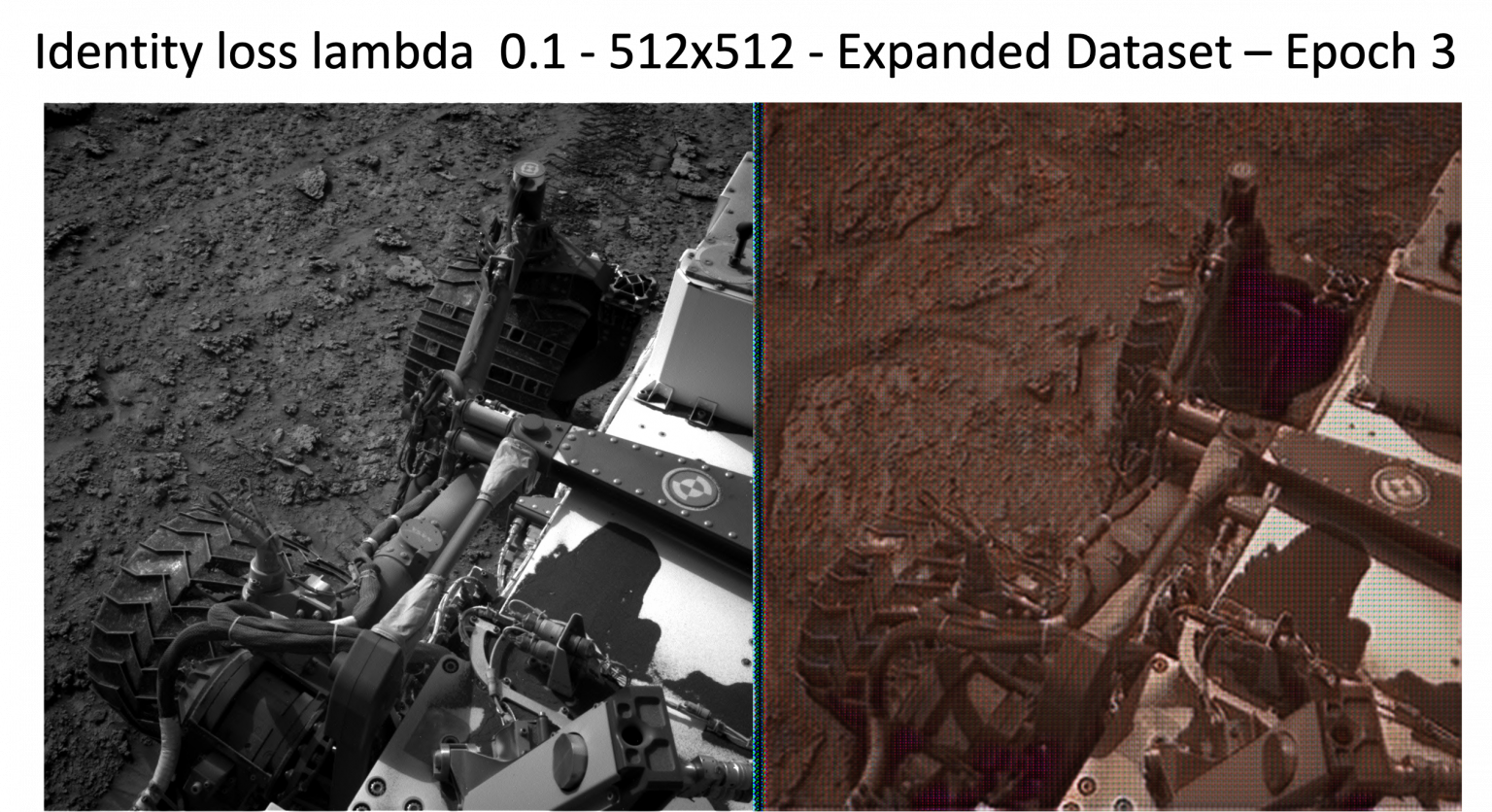

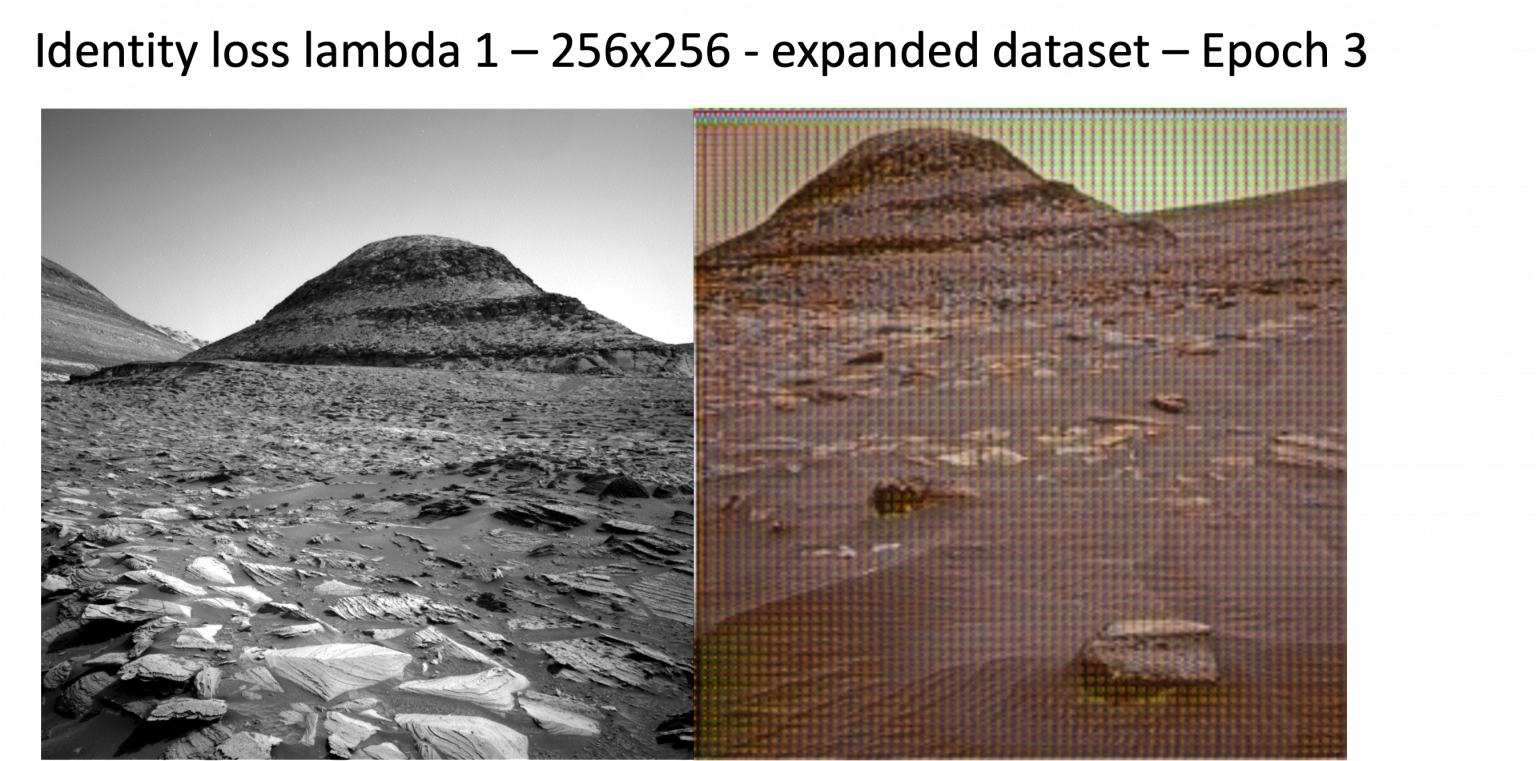
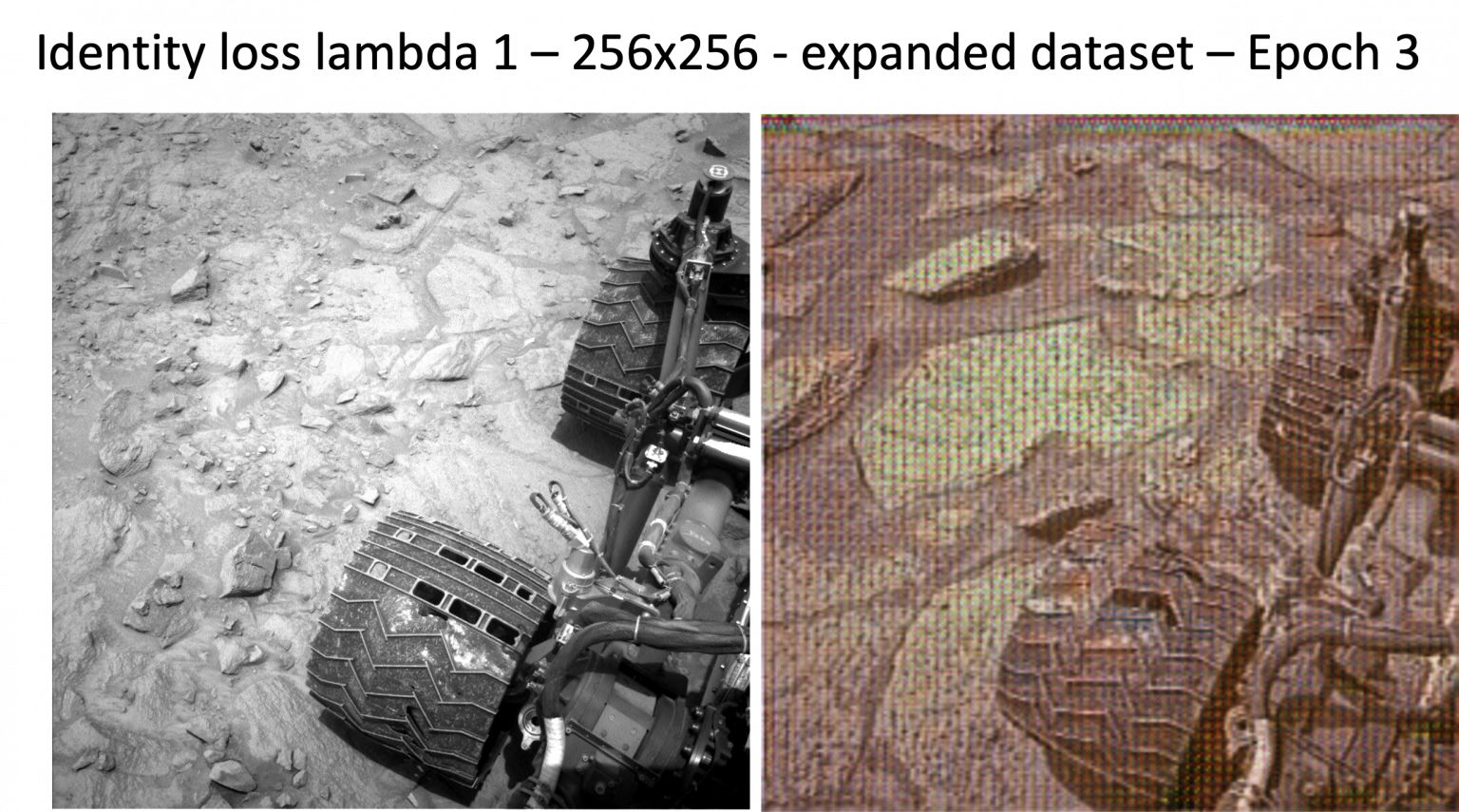
2023
distributed machine learning across ai companies – class project
Click each tab for more information
This project delves into Distributed Machine Learning (DML) within a System of Systems (SoS) framework, modeled as collaborating AI companies. It focuses on data privacy and model optimization, investigating how network topology and data diversity affect model accuracy and performance. This is accomplished through a three-phase process: individual data model training, model parameter sharing, and combining these parameters for enhanced results. Using Agent-Based Modeling and Machine Learning, AI companies are simulated as unique agents. Results indicate optimal settings for best SoS performance and a link between lower centrality and greater accuracy variance. Future research will focus on validating these findings and exploring scalability in larger systems.
Note:
This project was accomplished as part of the Systems of Systems course (AAE56000) at Purdue University.
PDF report and presentation available upon request.
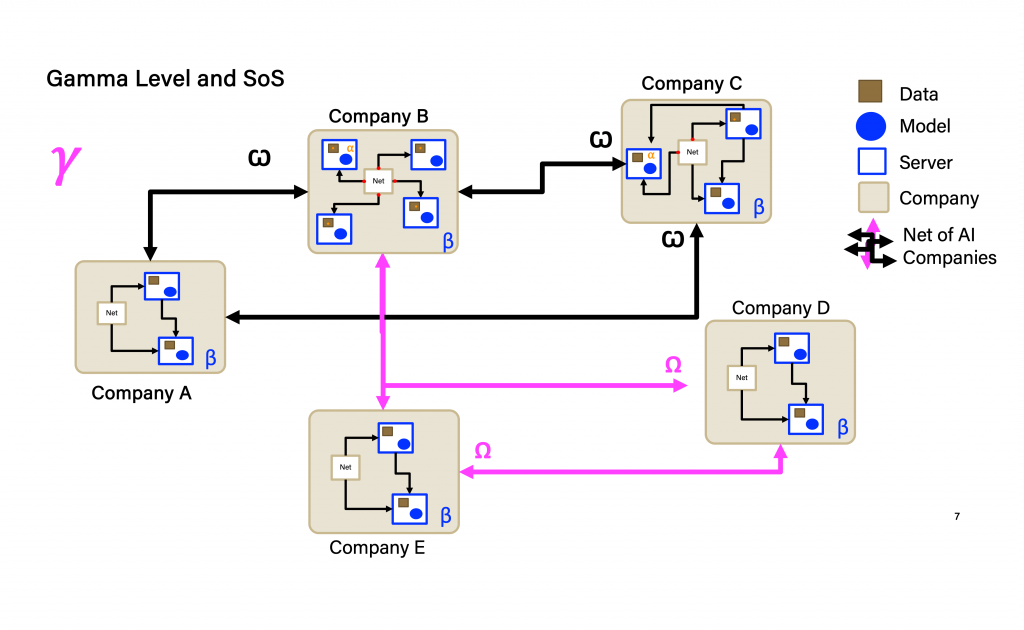
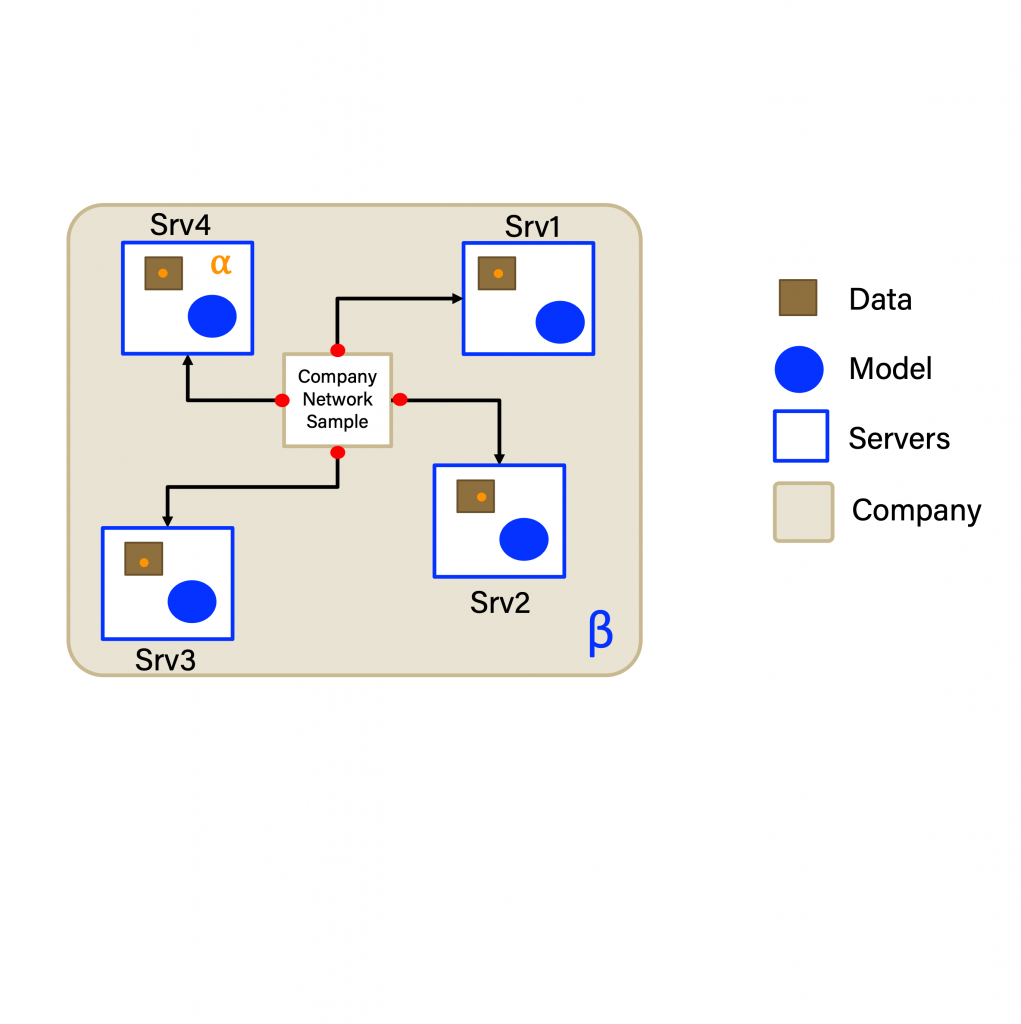
2019-22
morazan project – the 1st central american satellite built through regional collaboration
Click each tab for more information
- Created a baseline development plan for both space and ground segment systems
- Responsible for the coordination and communication between internal and external project stakeholders such as the Japan Aerospace Exploration Agency and the United Nations Office of Outer Space Affairs
- Defined and wrote around 200 mission, system, and sub-system requirements for both space and ground mission segments
- Implemented a secure, cloud-based document management system to carefully manage all project documentation
- In charge of the coordination and technical mentoring of each satellite subsystem’s team.
- Responsible for the tracking and coordination of the project’s schedule, deliverables, and expectations
2018-19
REUSABLE SPACE STATION mission CONCEPT FOR ACTIVE DEBRIS REMOVAL IN LOW EARTH ORBIT
Click each tab for more information
This project was developed within the framework of the Space Studies Program from the International Space University in 2018, and it was sponsored by the European Space Agency.
This project consisted in finding an innovative solution to tackle the space debris problem in low earth orbit. The solution was built using concurrent engineering methodology and principles of eco-design developed by ESA. The final mission concept proposal was optimized in several domains such as: environmental, business and technical.
Within my accomplishments in this project:
- Developed a Phase-0 design of a space robotic manipulator based on concurrent engineering at the European Space Agency.
- Designed the CAD representations of the proposed space station for active debris removal activities.
- Led the development of a feasible business case proposal based on active removal of space debris that exist in sun-synchronous orbits.
- Managed cross-disciplinary communications to optimize the business and engineering aspects of the final solution.
Conference Paper
- Fonseca,B.M.;Rivolta,A.; Owens,A.; Assis,S.; Hallak,Y.; Rudiger,J.; Zhdanovich,O.; Singh,P.;Soares,T.; ”Space Station Concept for Active Debris Removal Applying EcoDesign Principles”, 70th International Astronautical Congress, Washington DC, October 2019
External Links
2016-17
effect of non-inertial forces over two robotic arms under reduced (artificial) gravity
Click each tab for more information
This project occurred as a result of winning the 3rd DropTES round from the United Nations Office of Outer Space Affairs.
The final prize consisted in having the opportunity to perform 3 drops from a drop tower in the German Microgravity Research Center (ZARM) in Bremen.
I proposed a microgravity experiment based on understanding the impact of “artificial” (rotation-induced) gravity conditions on the dynamics and control of robotic arms. This was a “risky” challenge, since robotic projects are not commonly performed in drop towers.
The results were successfully presented at the International Astronautical Congress in Adelaide.
Among my accomplishments within this project are:
- Led a multidisciplinary team of five people for the successful accomplishment of the mission within budget and time constraints.
- Successfully designed and conducted a robotics experiment in microgravity at the Center of Applied Space Technology and Microgravity (ZARM).
- Analyzed the base reactive forces of two articulated robotic arms performing a predefined movement sequence in both artificial gravity and normal microgravity conditions.
- Assessed the differences in the dynamic behaviour of the end effector of a robotic arm performing under both artificial gravity (non-inertial conditions) and microgravity.
Conference Paper
- Fonseca, F.M.;Corrales,E.;Mayorga,E.C.;Rimolo,D.R.;Chaves,N.;”Analysis of Scaled Robotic Arm Manipulators Under Microgravity Conditions,”,68th International Astronautical Congress,Adelaide, October 2017
External Links
2016-17
MultiGAS – autonomous remote volcanic gas monitoring station
Click each tab for more information
Designed, built, validated, tested, and programmed a gas monitoring station based on the CR310 data logger.
This monitoring station was designed to operate under harsh volcanic conditions autonomously. MultiGAS was successfully deployed in two Costa Rican volcanoes by two important research and public institutions: Instituto Costarricense de Electricidad and Universidad Nacional.
MultiGAS was designed to be highly durable, low maintenance, and energetically self-sufficient. The product’s operational lifetime is expected to be of various years.
This station was powered by a combination of solar energy and wind power. It was capable of measuring CO2, H2S, O2, H2, water vapor, temperature, pressure, among other variables, and sending packed data to over a 40km radius.
2015-16
MINIGAS LITE – AIRBORNE VOLCANIC ACTIVITY MONITORING SYSTEM
Click each tab for more information
GasLAB is a research center from the University of Costa Rica that focuses on developing portable engineering solutions to measure environmental conditions in harsh areas.
Minigas Lite is an airborne, gas-monitoring platform that was successfully tested in the Kilauea volcano in Hawaii. It communicates over an RF link with a handheld radio connected to a monitoring station during the operation.
Among my accomplishments in this project are:
- Designed a PCB to integrate CO2, SO2 and H2S gas sensors to a STM32-f4 microcontroller platform for gases monitoring.
- Designed, programmed, communicated and tested an iMet-1 RSB radiosonde with an Arduino microcontroller to send sensor data over existing RF link.
- This equipment was flown in Hawaii for atmospheric and SO2 measurements in a stratospheric balloon flight
2016
Hexapod Robot Based on Arthropod Locomotion for Difficult Exploration Areas on Mars
Click each tab for more information
This project was part of the first all-Latin-American Mars Desert research Station (MDRS) Astronaut Analog Mission.
Among my accomplishments in this project are:
- Designed, integrated and tested the mechanical structure for the hexapod and used and iterative engineering design approach for optimization.
- Successfully demonstrated the use of additive manufacturing technologies for rapid deployment of planetary explorer robots.
External Links
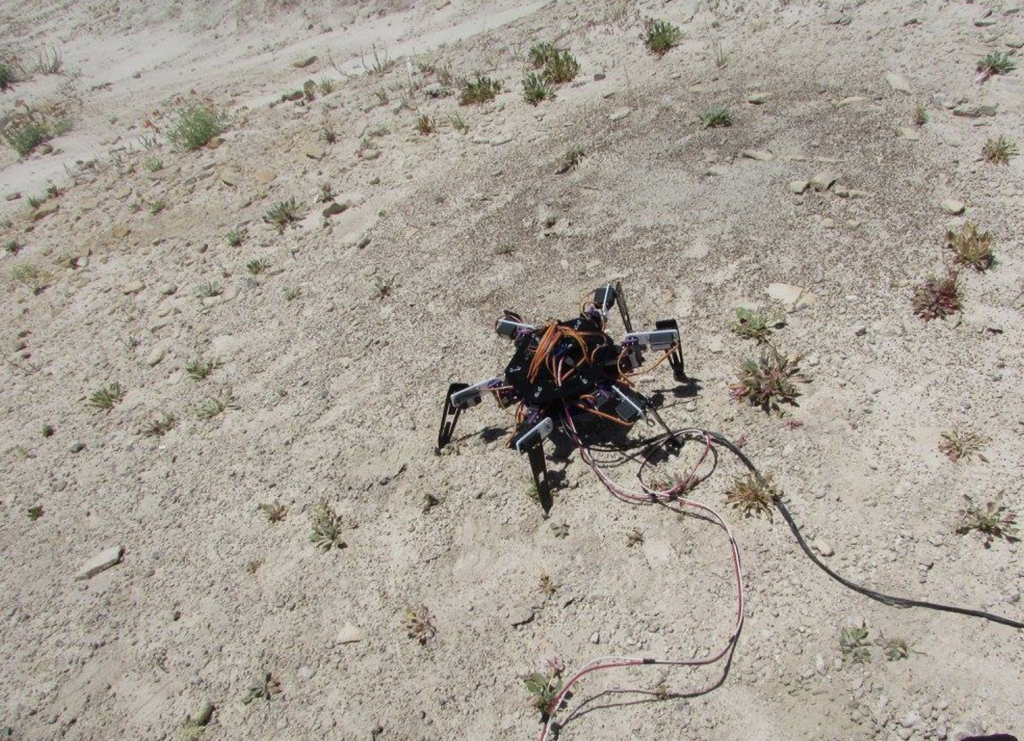
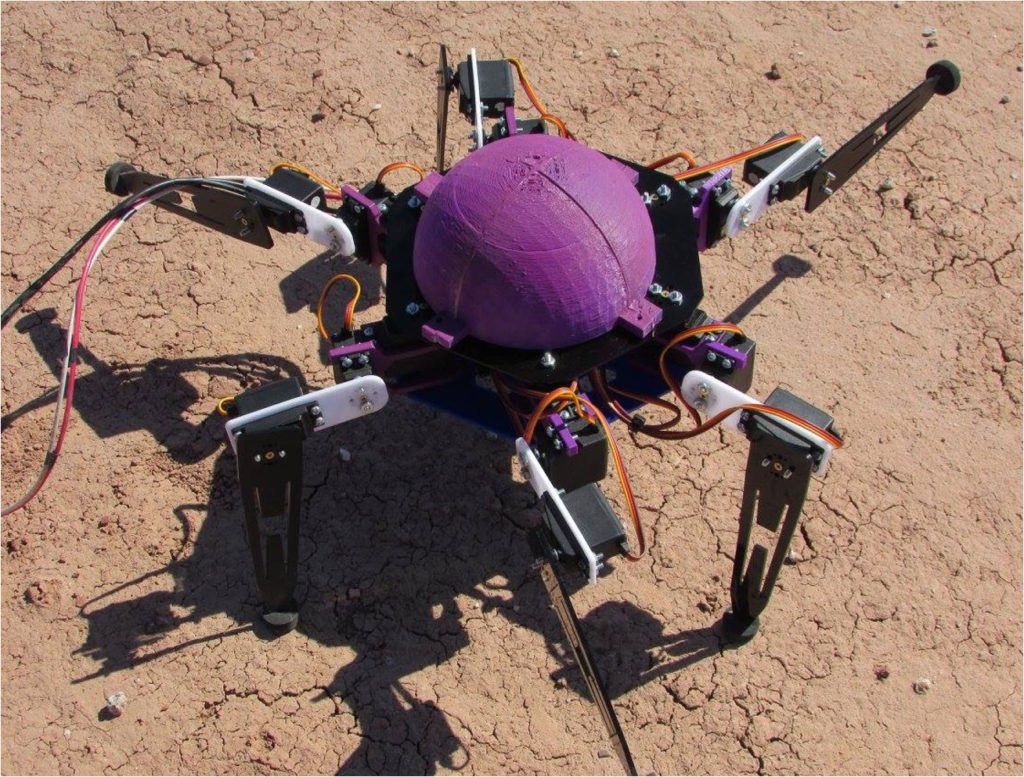
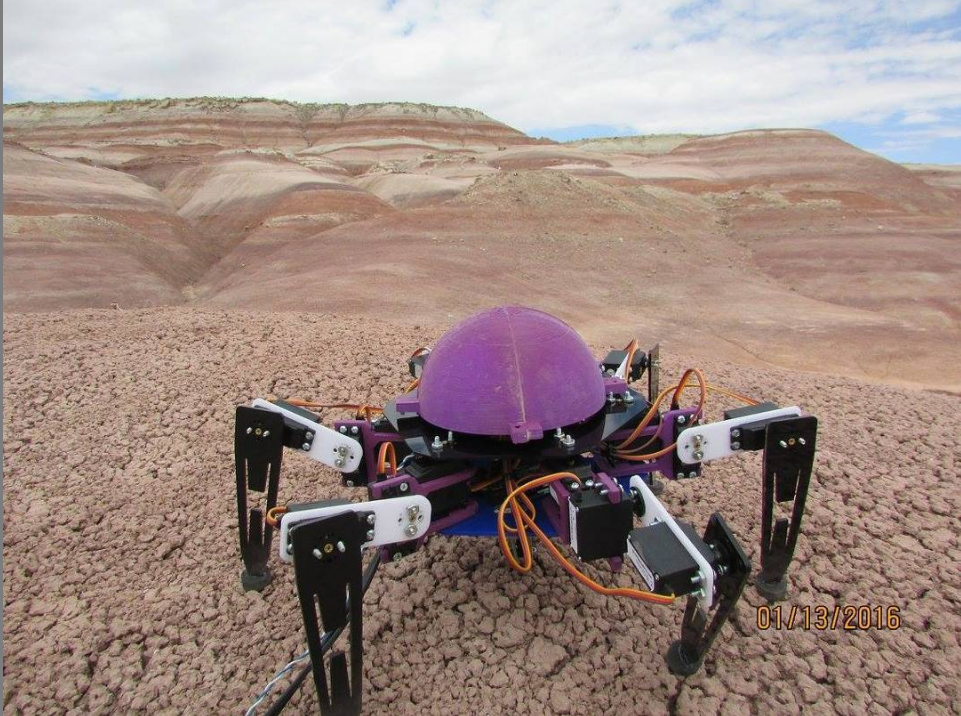
2015
in-flight control unit for a mass spectrometer and subsystems
Click each tab for more information
GasLAB is a research center from the University of Costa Rica that focuses on developing portable engineering solutions to measure environmental conditions in harsh areas.
Through this project I designed and programmed an in-flight control unit, based on an ATmega microcontroller,for remote manual/automatic control of a mass spectrometer and its subsystems.
The designed control unit was able to measure temperature, humidity, pressure and air flow data. In addition, it was capable of operating a turbomolecular pump and of controlling provided power to the mass spectrometer.
This system was flown by an unmanned aerial vehicle and used for volcanic research
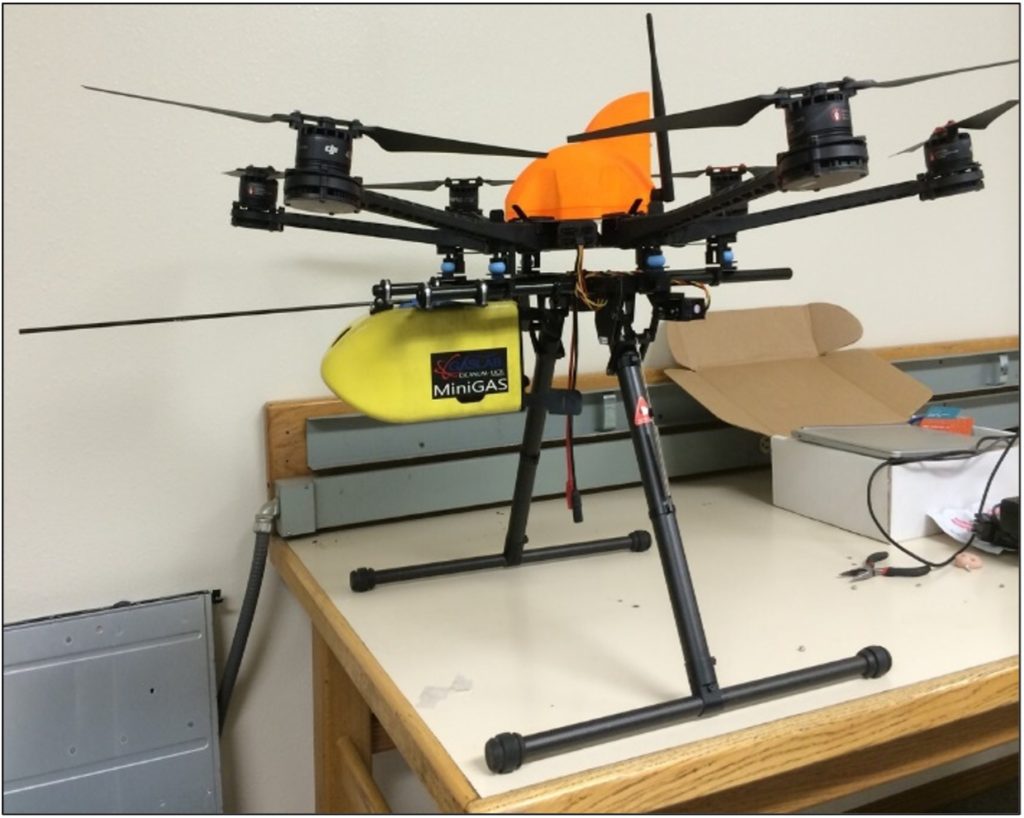
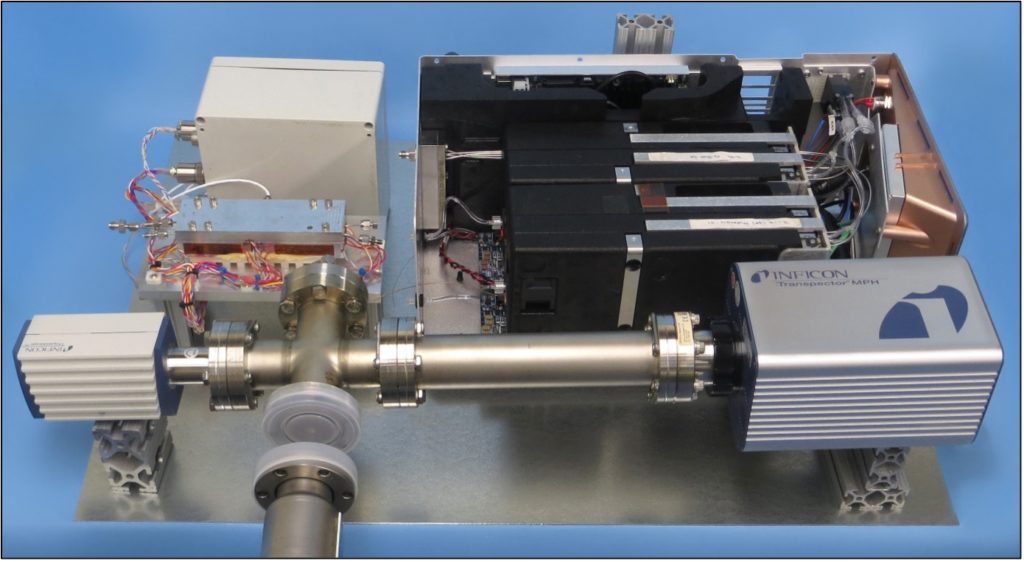
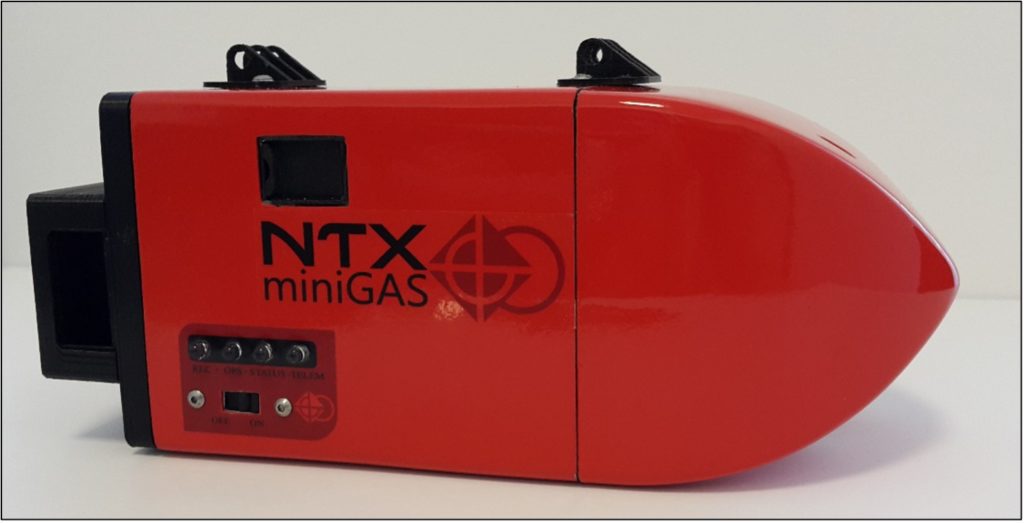
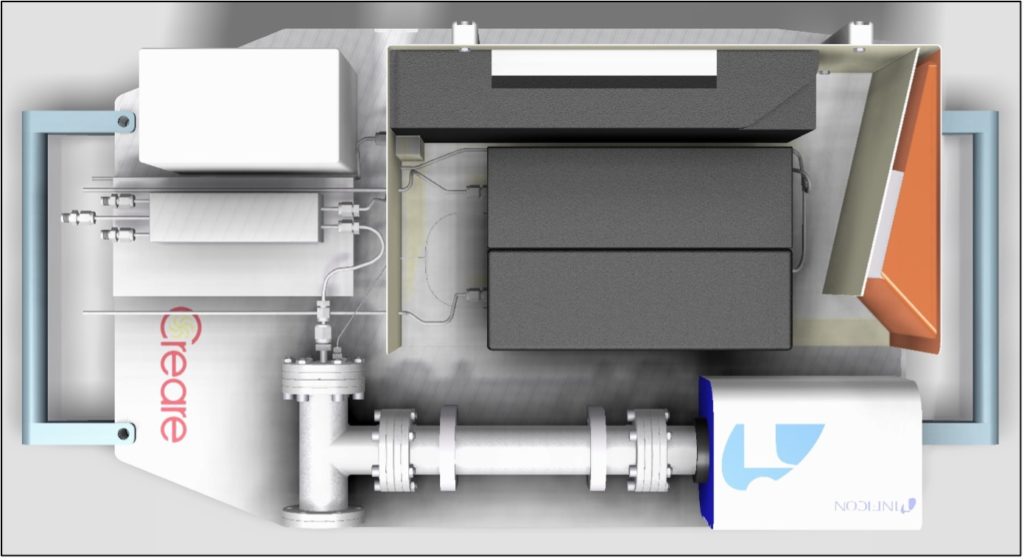
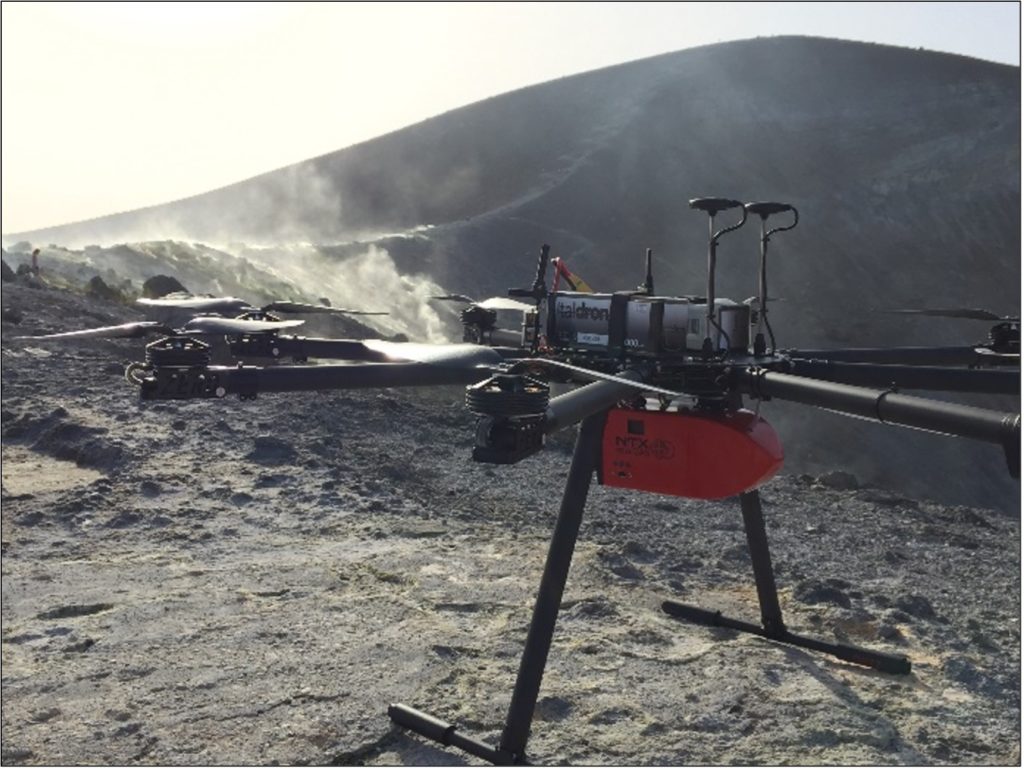
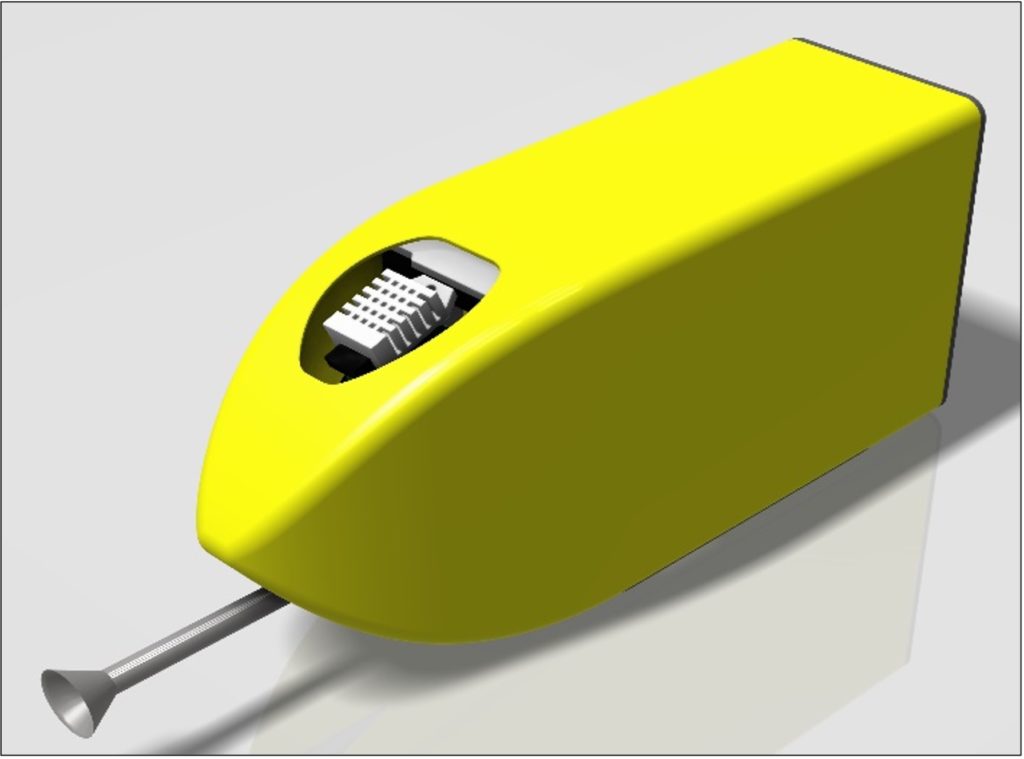
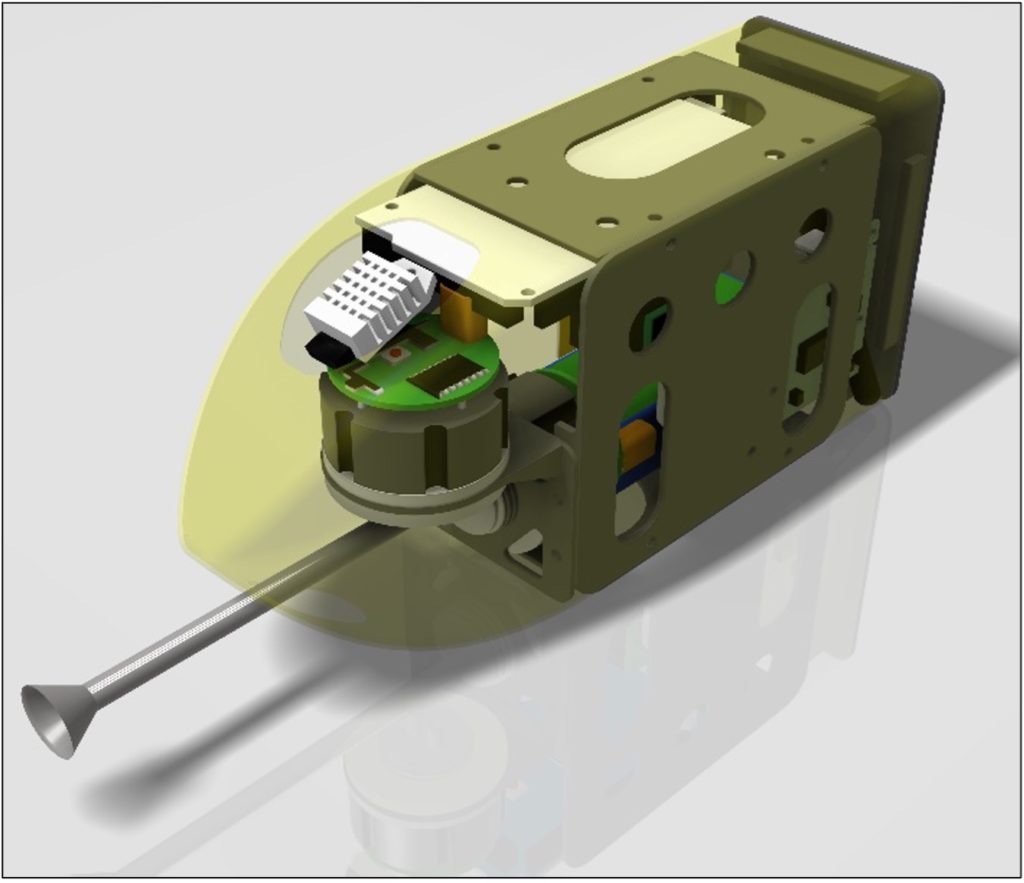
2015-16
Controller box for auto/manual control of hydraulic and pneumatic circuits.
Click each tab for more information
Through this project I developed a multipurpose, adaptable relay-output module for versatile, digital control pneumatic and hydraulic systems and processes used in a laboratory environment.
The system included a user-friendly LabVIEW interface for its programming, setup and control.
The system could be programmed to operate autonomously for several days while no operator was available.
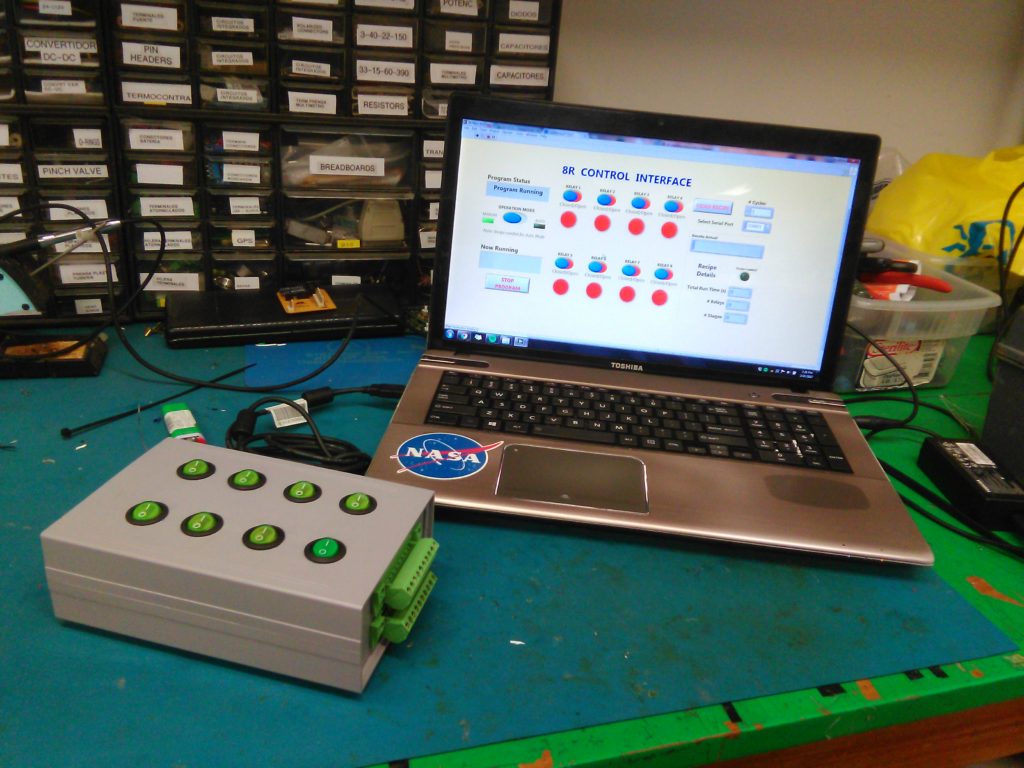
2014
blink-controlled small prototype of a remote-controlled car
Click each tab for more information
Designed a prototype of a small car that could be controlled remotely by using electroencephalographic activity from the frontal cortex and blinking.
The most inspiring part of this project to me, were the spinoff ideas and projects that came as a result. Through a university community service spin-off project, children with physical disabilities and cerebral palsy starting experimenting with the use of these technologies and similar ones to improve their lives.
Among other achievements that are part of this project:
- Processed real-time EEG data using Fourier transforms to identify different mental activity states based on the signal’s power spectrum.
- Programmed a dedicated control algorithm to control and drive the prototype vehicle by using the user’s eyeblink as the system’s input.
- Showed the potential of using the concept on people with physical disabilities.
2015
LAUNCH OF THE FIRST solid-state rocket with a scientific payload in costa rica
Click each tab for more information
Launch of the first solid state rocket in Costa Rica that carried a scientific payload to measure atmospheric variables.
Achievements & Awards
Click on each link for further information
- 2024 - Somos Purdue Award
- 2023 - Selected Member for the First Crew of the Student Analog Astronaut Training Program - Purdue SEARCH
- 2020 - 5th KiboCube Round Winner - UNOOSA & JAXA
- 2018 - Business Pitch Competition Winner - Business & Management Department - ISU
- 2017 - Finalist in the I Singularity University Costa Rica Global Impact Challenge.
- 2016 - 3rd Campaign Winner of the UNOOSA DropTES Fellowship Program
- 2014 - 1st Place at RobotiFest, National Robotics Contest
- 2013, 2014 - Academic Excellence Scholarship - University of Costa Rica
- 2012 - US Department of State Scholarship Grantee: Global UGRAD Program
- 2012, 2014 - 2nd and 3rd Place at National Robot Olympiad
- 2009, 2010 - Honorific Mention XII and XIII Costa Rican, Physics Olympiads
- 2010 - Math Olympiad Finalist
- 2010 - Regional Science Fair Winner - National Science Fair Finalist
leadership
-
2021 – Co-founder of the Central American Aerospace Network (RAC)
-
Background:
- Motivated by the success of the Morazán satellite project, another endeavor was initiated: the Central American Aerospace Network (RAC). This initiative is currently in progress with aims to:
- Extend space-related opportunities across Central America.
- Use space projects to tackle regional challenges.
- Inspire the next generation of Central American space enthusiasts
- Motivated by the success of the Morazán satellite project, another endeavor was initiated: the Central American Aerospace Network (RAC). This initiative is currently in progress with aims to:
-
Background:
-
2020 – Morazán Project – 1st Honduran satellite
-
Background
- Created an initial work plan, and designed teams’ organization and schedules for almost 40 students that work on all segments of the project.
- Coordinate bi-weekly meetings with each of the satellite´s subteam to check if we are on track, provide guidance, and ensure project members are smooth sailing.
- More information about the satellite is here: www.proyectomorazan.space
-
Background
-
2019 – Organizer of the 1st Central American Space Generation Workshop
-
Background
- I organized several components of the 1st Central American Space Generation Workshop. I was in charge of the communication with delegates, moderated internal meetings, invited international speakers, made sure tasks were on track and in the right time, found sponsors for the event, helped organize the coordination team, and made sure communication was optimal with the delegates during the conference. The event brought around a record-breaking 150 delegates at the time.
-
Background
-
2016 – DropTES 3rd Round – Research Team Coordinator
-
Background
- Proposed a microgravity experiment that won the 3rd round of UNOOSA’s DropTES competition. In addition, I organized the team’s tasks and schedule to ensure the experiment’s readiness within the expected timeline, resources, and technical requirements.
-
Background
-
2015 – Staff Member of the 1st Costa Rican Rocketry Camp
-
Background
- Helped organize the first rocketry camp in Costa Rica. I helped attendees during the building of rocketry models and provided guidance overall throughout the event.
-
Background
-
2012 – Robotics Group – University of Costa Rica
-
Background
- When a group of friends and I first got into University, we wanted to build robots, but there were no materials available nor a dedicated lab for it. In response to the status quo, with the help of a faculty member and several other colleagues, we created the first robotics group at the University of Costa Rica. This became a space to share ideas, engineering creativity, and of course, our love for robots! Several award-winning robotics projects came out of this small space, from which dozens of students benefited and learned about robotics.
-
Background
education
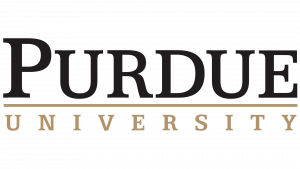
PhD Student in Aeronautics and Astronautics (2022 – Today)
GPA: 3.80

31st Space Studies Program Program (2018)
Business and Management Minor
GPA: 4.0

Mechanical Engineering (2011-2016)
Minor in Electrical Engineering
Class Top 5% (2/42)

Mechanical Engineering (H2 2012)
One semester abroad through a US Department of State Scholarship
PUBLICATIONS
[1] Moacir, B., Reynel,G., Francisco,S.,Mauricio,A., Eduardo, G., Fernando, Z., Moacir, B., Luis, M., Carlos, A., María José, M. and Oliver, S, 2022. Morazán Project Ground and Space Systems: Results of a Successful Preliminary Design for Space and Ground Segments, International Cooperation, Knowledge Transfer and Lessons Learned. In: 73rd International Astronautical Congress, Paris: Available at: <https://iafastro.directory/iac/paper/id/59527/summary/>
[2] Javier, M., Vilma, O., Eduardo, G., Fernando, Z., Moacir, B., Luis, M., Carlos, A., María José, M. and Oliver, S., 2020. Cabañas: First Honduran Academic Ground Station for small satellite missions. In: 71st International Astronautical Congress. [online] Available at: <https://iafastro.directory/iac/paper/id/59527/summary/>
[3] Javier, M., Moacir, B., Luis, M., Eduardo, G., María José, M., Oliver, S., Carlos E., A. and Fernando, Z., 2020. Paving the way to the stars: Inclusion and education through space. In: International Astronautical Congress Cyberspace edition. International Astronautical Federation.
[4] Moacir, B., Aureliano, R., Alexander, O., Shirrel, A., Yanina, H., Rudiger, J., Olga, Z., Singh, P. and Tiago, S., 2019. Space Station Concept for Active Debris Removal Applying EcoDesign Principles. In: 70th International Astronautical Congress.
[5] Luis, M., Moacir, B., Carlos E., A., María José, M., Fernando, Z., Javier, M., Eduardo, G. and Oliver, S., 2019. Morazán MRZ-SAT CubeSat project for integration of the Central American Nations through collaboration in Space. In: 70th International Astronautical Congress. International Astronautical Federation.
[6] Moacir, B., Nicole, C., Carlos, M., Renato, R. and Ernesto, C., 2017. Analysis of scaled robotic arm manipulators under microgravity conditions. In: 68th International Astronautical Congress. Adelaide: International Astronautical Federation.
EPISTEMAS PODCAST PRESENTATION (Spanish)
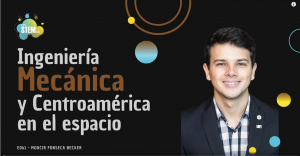
media interviews
united nations office of outer space affairs -
2021 LEAD YOUTH INNOVATION FESTIVAL (english)
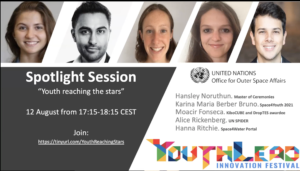
interview for national media - la reaccion cr (spanish)
